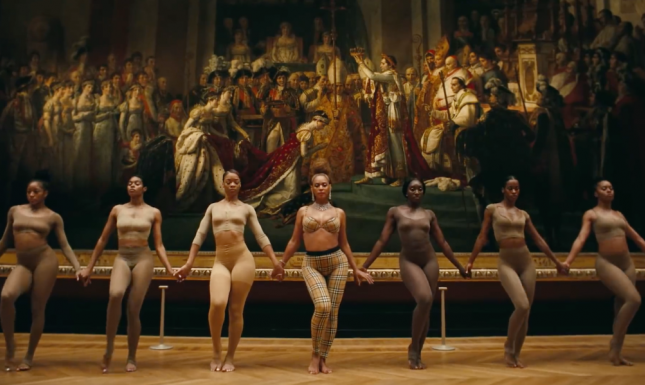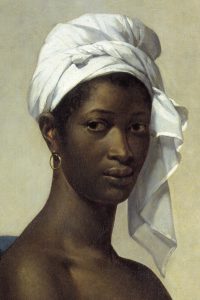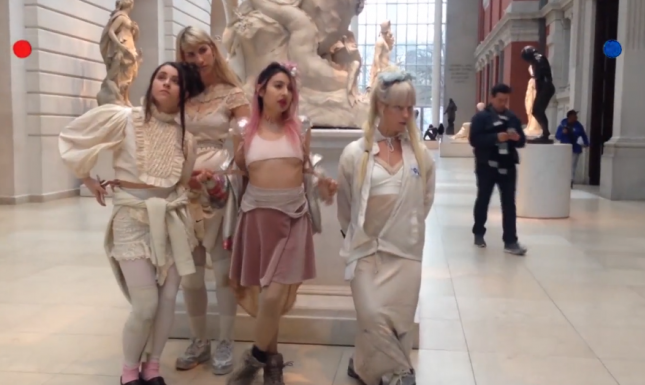Who's Allowed to Dance in the Museum?
It’s a difficult time for museums, now closed to visitors. Fortunately, we can still access some of our favourite museums from home, not only through newly created museum vlogs and virtual tours, but also through music videos shot in museums.
With accessibility, diversity and inclusion being important topics in the current museum field, it is interesting to see how digital access to museums might influence and reflect on this debate. One could argue that the increase of virtual museum tours is of great benefit to people who, for whatever reason, have difficulty visiting a museum building. However, video itself is not a medium accessible to everyone either.
The practical and physical aspects of accessibility are often central to the debate around inclusivity in museums. As my LUCAS colleague Nynke Feenstra explains, there is a second, intersecting type of accessibility, concerned with the question whether people from diverse background have access to the stories told in the museum. Inclusivity requires both; everyone should be able and feel welcome to enter the museum.
In this blog post I discuss several popular music videos shot in museums, to see how they impact and address the inclusivity of museums. Rather than on the practical side of accessibility, I focus on the cultural backgrounds of the visitors the museum welcomes, and the diversity of the stories that are told. How much space is there for criticism on diversity in museums in these music videos? And who has the authority to decide which groups are represented in the museum? Can these music videos encourage the shift from the museum of authority to the more democratic museum of mutuality?
Beyoncé in the Louvre
"Apes**t" by The Carters.In the summer of 2018, ever-rising music star Beyoncé released the music video “Apes**t”, which she and her husband Jay-Z (as ‘The Carters’) shot in the Louvre. The visuals of the video are quite spectacular. In the empty museum hall (something most of us will never get to see), the couple poses in front of the Mona Lisa; Beyoncé and her crew dance in front of the Coronation of Napoleon; and the marble stairs are used as stage for a minimalist choreography.


Even on first sight it’s clear that this video is deeply political. Beyoncé and Jay-Z claim their black presence among the Western canon, represented by the partly colonial collection of the Louvre. This interpretation is strengthened by the last artwork that is introduced in the video, the Portrait of Madeleine by the black female painter Marie-Guillemine Benoist, which has become a symbol of abolitionism and feminism.


Art historians and theorists have further argued how this black presence is claimed, calling “Apes**t” an embodied intervention of Western Art and a subversion of the dominant imperial gaze. Liedeke Plate, for example, argues that Beyoncé and Jay-Z make the Louvre a more inclusive space by presenting a different history and “addressing, redressing, and challenging the politics of representation”, while also providing viewers access and closeness to the artworks. Thus, the Carters challenge the museum’s authority by adding different perspectives, engaging with an audience that might not normally feel welcome in the Louvre.
Plate also addresses the display of wealth inherent to shooting a video in the Louvre. And indeed, despite creating closeness to the artworks, the video can also incite a feeling of distance; the Carters, with their expensive outfits and private access to the Louvre, are definitely not like us. The high production value of the polished video adds to this experience of distance. Moreover, the Louvre benefited from the video, seeing a rise in visitors, without having to make any actual changes that would improve the museum’s inclusivity. If the ability to challenge the museum’s authority comes with money, is this really a move towards democratization?
Dancing in the Rijksmuseum
MEROL ft. Boekoesam - "geen reet".A very different experience is incited by a video shot in the Netherlands’ equivalent to the Louvre, the Rijksmuseum: “Geen reet”, by singer MEROL and rapper Bokoesam (2019). The chorus consists of the iconic line “Geen reet, en het boeit me geen reet”, which can be loosely translated as “I don’t have an ass, and I don’t give a rat’s ass”. The song, promoting body positivity, is light and funny, as is the video: we see close-ups of the buttocks of artworks, and the slightly psychedelic, informal style reminds of 90s pop culture, making it a nostalgic viewing experience for millennials. This informality leads to a feeling of closeness, making the museum space seem accessible and welcoming, especially to a younger audience.
Thijs Boontjes - "Deze nacht".A similar feeling is incited by another music video shot in the Rijksmuseum: “Deze nacht” (All Night Long) by Thijs Boontjes (2020), which has a likewise informal and accessible style, with a museum guard joining the dancers. Another video with the comedic aspect of a dancing Rijksmuseum guard is Cookachoo’s “Twirl” (2017), which addresses homophobia by letting Dutch folk dinger Dries Roelvink perform the vogue, a dance style with origins in the LGBTQIA+ community.
Cookachoo - "Twirl".These videos shot in the Rijksmuseum appropriate the museum as a space where anyone is welcome to dance, and they do address issues of inclusivity in society at large. However, they do not critically engage with the collection or canon in the way the Carters do, and hence do not challenge the museum’s authority to select art and present a story.
Guerilla shots from the Met
FIN - "Daughters".A video that combines some of the strengths of the Louvre and Rijksmuseum videos is “Daughters” (2017), by FIN (Rebecca Fin Simonetti), FlucT (Monica Mirabile & Sigrid Lauren), and Eartheater (Alexandra Drewchin).[1] The performers shot the video secretly on their cellphones in the Metropolitan Museum of Art, because filming in the museum is prohibited. They filmed several vignettes this way, which they combined with found footage.
“Daughters” can, just as “Apes**t”, be called an intervention in the canon of art. The performers insert their female bodies in the male-dominated space. In an interview FIN states that she wanted to focus on ancient marble statues because they are foundational to western culture, and the ideas they represent were disseminated through colonialism. The final moments of the video are most explicitly critical, with a reference to the wealthy Koch family, benefactors of the museum. FIN calls them ‘evil’ — possible referring to capitalist power structures and the family’s support of the Republican Party and libertarian ideals.


Thus, “Daughters” criticizes the power structures underlying the museum, and does so in a video that appropriates the museum as an accessible space — apparently anyone can make a video in the museum, without payment or permission. We can wonder how accessible the video itself is, with its experimental style that might not appeal to the average pop culture consumer. It does, however, raise the question whether a true challenge of the museum’s authority can only be made without collaboration with and permission of the museum in question.
[1] I thank Tim Vergeer for bringing this video to my attention.
© Lieke Smits and Leiden Arts in Society Blog, 2020. Unauthorised use and/or duplication of this material without express and written permission from this site’s author and/or owner is strictly prohibited. Excerpts and links may be used, provided that full and clear credit is given to Lieke Smits and Leiden Arts in Society Blog with appropriate and specific direction to the original content.



0 Comments